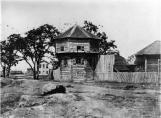1
When Agnes McKenzie first arrived at Fort Victoria she was in for a surprise. The house which she had been promised prior to arrival in Victoria had not yet been built. So after spending three years living in a shack by the Gorge Waterway, the manor house was completed on May 1st, 1856 and Agnes moved in with Kenneth, her husband, and her seven children; Agnes, Jessie, Kenneth, James, Dorothea, Goodie and Andrew. An eighth child, Robert, was born in Craiglfower Manor.Unlike the other women on the farm, Agnes had two servants to help her with the housework and children. Even with this additional help the children found that there was so much to keep the adults busy that they had far more free time to play outside than they ever did in Scotland.
3
The parlour at Craigflower manor while the McKenzies lived in the house19th Century, circa 1860
Craigflower, View Royal, Victoria, Canada
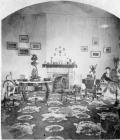 Credits:
Credits:A-01438
4
Manor photo of a Woman and Child19th Century, Circa 1860
Craigflower, View Royal, Victoria, Canada
 Credits:
Credits:A-02668
5
The livingroom of Craigflower Manor during the McKenzie's residence19th Century, circa 1860
Victoria, British Columbia, Canada
 Credits:
Credits:H-06040
6
The girls found life at Craigflower relatively free after the more restrictive life in Scotland. They were always on hand to help with the housework since there was a shortage of labour, but they were still allowed to play outside far more often without supervision. Agnes hired two native women to help her with the housework, named Polly and Lucy. At first the girls and women were scared of the natives, but they quickly got over that fear, and the children all learned to speak fluent Chinook Jargon, which was a mixture of European languages and the local native languages."We were happy as children," Miss MacKenzie( Goodie) recalls rather sadly, "for it was a great change for us to run wild after a more or less restricted nursery life in Scotland. But our mother found it very difficult. She had brought two servants with her, but there was such a lack of white women that they married, almost at once. So we were obliged to have Indian servants."(Women in Early Victoria)
7
The McKenzie Women19th Century, circa 1870
Craigflower, View Royal, Victoria, Canada
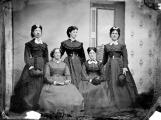 Credits:
Credits:A-01447
8
Upon arrival on the farm all of the cooking had to be done outside. One day Kenneth Sr., while out on a walk found a pile of limestone rock, which was quarried and made into a large oven. Since they had yet to set up their own bakers, initially men came from the Royal Navy to create the bread, which was referred to as 'soft bread', and became famous up and down the west coast for its lack of mould or weevils on the long sea voyages.11
Craigflower Schoolhouse's first class with parents and families19th Century, circa 1855
Craigflower Schoolhouse, Saanich, Victoria, Canada
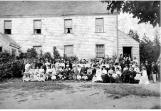 Credits:
Credits:D-03648
12
Craigflower Schoolhouse as seen from the farm20th Century, circa 1900
Craigflower Schoolhouse, Saanich, Victoria, Canada
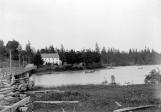 Credits:
Credits:H-06200
13
All of the children in the McKenzie household attended Craigflower Schoolhouse while residing on the farm. By the time the younger children were ready for the higher grades, though, they had left the farm and were sent to private schools that had been established in downtown Victoria. During the time they attended the Schoolhouse the girls learned such skills as drawing, sewing, cleaning, cooking and needlepoint in addition to their regular lessons. Some of the samples of this work are still in existence.14
Agnes, Kenneth's daughters drawing of a house19th Century, 1856
Craigflower, View Royal, Victoria, Canada
 Credits:
Credits:PDP-09665
